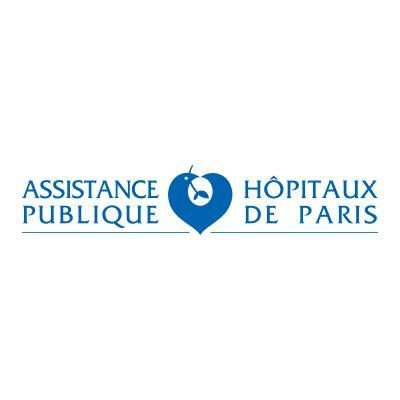预约演示
更新于:2025-05-07
Extracorporeal membrane oxygenation complication
体外膜肺氧合并发症
更新于:2025-05-07
基本信息
别名 Extracorporeal membrane oxygenation complication、膜型肺による体外酸素加法に伴う合併症、マクガタハイニヨルタイガイサンソカホウニトモナウガッペイショウ |
简介- |
关联
1
项与 体外膜肺氧合并发症 相关的药物靶点- |
作用机制- |
非在研适应症- |
最高研发阶段申请上市 |
首次获批国家/地区- |
首次获批日期1800-01-20 |
103
项与 体外膜肺氧合并发症 相关的临床试验NCT06868823
LMWH Versus UFH as ECMO Anticoagulation in Lung Transplantation: A Prospective, Observational, and Pilot Study
The aim of this observational pilot study is to evaluate the effectiveness and safety of low-molecular-weight heparin (LMWH) compared to unfractionated heparin (UFH) as anticoagulation in perioperative ECMO during bilateral lung transplantation.
The main question this study seeks to answer is:
Does LMWH provide a safe and effective alternative to UFH for ECMO anticoagulation in lung transplantation, with reduced bleeding and thrombotic complications?
Patients undergoing bilateral lung transplantation with perioperative veno-arterial (V-A) ECMO support will be assigned to one of two anticoagulation strategies:
UFH group: Standard UFH anticoagulation monitored using ROTEM. LMWH group: Enoxaparin-based anticoagulation monitored using ROTEM. The study will assess perioperative blood loss, hemoglobin levels, transfusion needs, and thrombotic events. Additional analyses will include coagulation profile assessments using point-of-care (POC) tests, thrombin generation test (TGT), and laboratory coagulation parameters.
The main question this study seeks to answer is:
Does LMWH provide a safe and effective alternative to UFH for ECMO anticoagulation in lung transplantation, with reduced bleeding and thrombotic complications?
Patients undergoing bilateral lung transplantation with perioperative veno-arterial (V-A) ECMO support will be assigned to one of two anticoagulation strategies:
UFH group: Standard UFH anticoagulation monitored using ROTEM. LMWH group: Enoxaparin-based anticoagulation monitored using ROTEM. The study will assess perioperative blood loss, hemoglobin levels, transfusion needs, and thrombotic events. Additional analyses will include coagulation profile assessments using point-of-care (POC) tests, thrombin generation test (TGT), and laboratory coagulation parameters.
开始日期2025-05-01 |
申办/合作机构- |
NCT06814340
"Continuous Positive Airway Pressure on Venovenous extracorporeaL Membrane Oxygenation for Acute respIratory Distress syndrOme" - CALMDOWN
The CALMDOWN trial is a prospective, open-label, multicenter, comparative, controlled trial randomizing patients who received near apneic ventilation vs usual care on ECMO (ultra-protective lung ventilation).
The study goal is to investigate the benefit of early apneic ventilation in the most severe forms of acute respiratory distress syndrome (ARDS) rescued by ECMO.
Indeed, our hypothesis is that that early (near) apneic ventilation on venovenous ECMO for severe ARDS can enhance ventilator injury prevention and therefore reduce ECMO duration and mortality at Day 60.
The study goal is to investigate the benefit of early apneic ventilation in the most severe forms of acute respiratory distress syndrome (ARDS) rescued by ECMO.
Indeed, our hypothesis is that that early (near) apneic ventilation on venovenous ECMO for severe ARDS can enhance ventilator injury prevention and therefore reduce ECMO duration and mortality at Day 60.
开始日期2025-04-01 |
NCT06862700
Association Between Vasopressor Exposure Levels and 30-Day Mortality in Patients Receiving ECMO Support for Cardiogenic Shock: A Prospective Multicenter Cohort Study
The goal of this observational study is to learn about the association between vasopressor exposure levels and outcomes in adults with cardiogenic shock receiving VA-ECMO. The main question it aims to answer is:
Does reduced exposure to vasopressors lower the 30-day mortality in patients with cardiogenic shock when receiving ECMO support? Participants who are receiving ECMO support for cardiogenic shock as part of their regular medical care will have their data collected, including information about their vasopressor use and mortality outcomes, over the course of the study.
Does reduced exposure to vasopressors lower the 30-day mortality in patients with cardiogenic shock when receiving ECMO support? Participants who are receiving ECMO support for cardiogenic shock as part of their regular medical care will have their data collected, including information about their vasopressor use and mortality outcomes, over the course of the study.
开始日期2025-02-26 |
申办/合作机构 |
100 项与 体外膜肺氧合并发症 相关的临床结果
登录后查看更多信息
100 项与 体外膜肺氧合并发症 相关的转化医学
登录后查看更多信息
0 项与 体外膜肺氧合并发症 相关的专利(医药)
登录后查看更多信息
22
项与 体外膜肺氧合并发症 相关的文献(医药)2025-01-01·Pediatric Critical Care Medicine
Prospective Randomized Pilot Study Comparing Bivalirudin Versus Heparin in Neonatal and Pediatric Extracorporeal Membrane Oxygenation
Article
作者: Li, Xilong ; Weller, Jamie ; Hatton, Laura ; Raman, Lakshmi ; Zia, Ayesha ; McMichael, Ali
2025-01-01·ASAIO Journal
Infected Thrombosis Leading to Veno-Venous Extracorporeal Membrane Oxygenation Dysfunction in Chronic Thromboembolic Pulmonary Hypertension
Article
作者: Gordon, Adam C. ; Grate, Jeremy C. ; Dave, Sagar B. ; Reynolds, Tyler S.
2024-12-01·Pediatric Critical Care Medicine
Beta-Lactam Antibiotic Exposure During Pediatric Extracorporeal Membrane Oxygenation: Retrospective Cohort Analysis of Drug Levels Using Standard Dosing, 2018–2020
Article
作者: Gana, Inès ; Tréluyer, Jean Marc ; Marsaux, Alice ; Léger, Pierre-Louis ; Toubiana, Julie ; Benaboud, Sihem ; Bille, Emmanuelle ; Rambaud, Jérôme ; Béranger, Agathe ; Renolleau, Sylvain ; Oualha, Mehdi ; Lorrot, Matthie ; Grimaud, Marion
分析
对领域进行一次全面的分析。
登录
或

生物医药百科问答
全新生物医药AI Agent 覆盖科研全链路,让突破性发现快人一步
立即开始免费试用!
智慧芽新药情报库是智慧芽专为生命科学人士构建的基于AI的创新药情报平台,助您全方位提升您的研发与决策效率。
立即开始数据试用!
智慧芽新药库数据也通过智慧芽数据服务平台,以API或者数据包形式对外开放,助您更加充分利用智慧芽新药情报信息。
生物序列数据库
生物药研发创新
免费使用
化学结构数据库
小分子化药研发创新
免费使用
